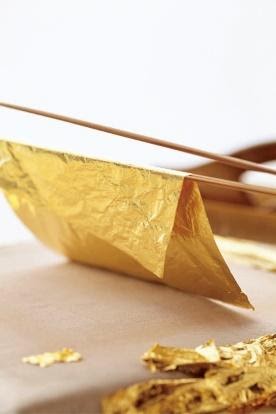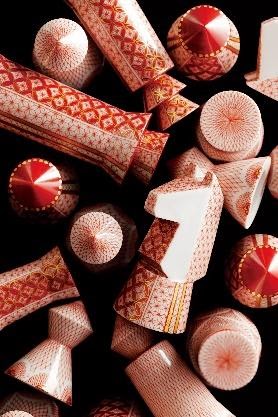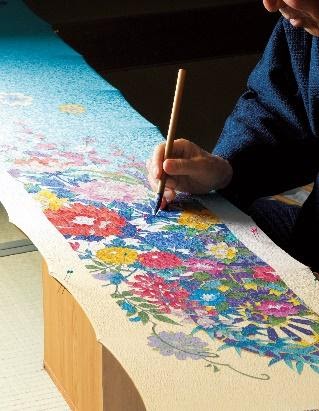Japan’s Ishikawa prefecture has a thriving traditional craft scene that’s been nurtured for generations.
From shimmering gold leaf to masterpieces of woven silk, read on for an artisanal guide to Ishikawa.
A Brief History
Ishikawa’s rich history of fine arts and crafts dates back to the Edo period (1603-1867), when the region prospered under the rule of the wealthy Maeda family. Like the Medici’s of the Italian Renaissance, the Maeda family poured their wealth into the arts and established craft workshops where experts from around Japan could hone their skills.
Japanese arts, such as Noh theatre and tea ceremonies, flourished. Many specialised crafts, such as gold leaf, Kutani china and Kaga-yuzen silk dyeing developed out of these traditions. Today, there are countless opportunities to experience Ishikawa’s thriving artistic culture first-hand.
Shimmering Gold Leaf

Over 99 percent of Japan’s gold leaf is produced in Kanazawa, Ishikawa. Its boutiques, galleries and cafes celebrate this luxurious craft. Gold leaf is found in a wide range of products and is even edible and served on soft-serve ice cream.
According to legend, gold leaf production began in Kanazawa when the first Maeda lord, Toshiie (1537–1599), ordered gold-tipped spears for his warriors. Historically, gold leaf was used in luxury residences and temples. Learn about gold leaf at the Kanazawa Yasue Gold Leaf Museum and try embellishing a jewellery box, postcard or chopsticks at one of the many shops offering.
Kutani china ware

Kutani ware is Ishikawa’s local porcelain, first made in the mid-1600s when kilns were established in what is now the city of Kaga. Although known for vivid colours and bold designs, Kutani ware is not identifiable by one style. The original style, produced from the mid-1600s to 1730, features nature motifs in two distinct colour palettes: aote (deep green, yellow, dark blue, and purple) and iroe (red, green, purple, dark blue, and yellow). In the 1800s, Kutani was made in a new style called akae, with detailed patterns painted in red glaze. Later, with the growing importance of the export market, gold was added to akae to help Kutani ware stand out overseas.
The Kutani-yaki Art Museum introduces the history of the craft and displays notable works. Famous pieces are also displayed at the Kutani Ceramic Art Village. The Kutani-yaki Kiln Exhibition Hall exhibits the 1824 kiln that was instrumental in reviving the art after it had been dormant for nearly 100 years. Visitors can paint a ceramic piece using Kutani ware methods and then have it fired at the hall’s own kiln.
Kaga-yuzen silk dyeing

Kaga-yuzen, the local technique of hand-dyeing Japanese silk, has been practised in Kanazawa for about 500 years. Kimono dyed this way commands extremely high prices. Using a palette of five colours – indigo, crimson, ocher, dark green and royal purple – Kaga-yuzen creates vivid, hand-drawn patterns featuring realistic natural motifs such as insects and flowers.
See notable examples of Kaga-yuzen, try the dyeing process or rent an authentic Kaga-yuzen kimono at the Nagamachi Yuzen-Kan or Kaga-Yuzen Kimono Center, the latter of which has a studio where visitors can observe a master at work.
Wajima lacquerware
Produced on the Noto Peninsula for over five centuries, Wajima lacquerware is highly regarded for its durability and refined appearance. Today, there are around 500 lacquerware workshops in the small city and the pieces make popular and authentic souvenirs from Japan. Especially strong due to the base layer of lacquer mixed with local soil, Wajima pieces can last for hundreds of years.
The Wajima Lacquerware Museum displays Wajima lacquerware pieces and tools collected by a local craftsman. Get an even closer look at the Wajima Kobo Nagaya, where visitors can meet artisans, observe the process and decorate their own pieces to take home.
Beat the January Blues this Year




